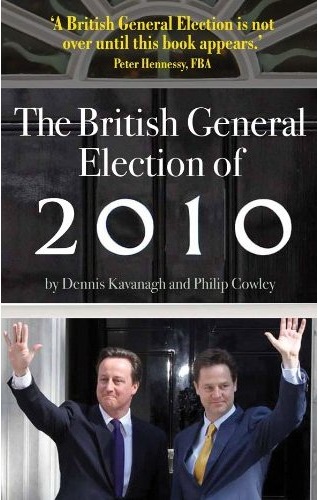But why didn’t the Tories get a majority?

Was/is the Conservative brand still contaminated?
It’s now just on five months since the general election and the conference season has prompted a fair bit of looking back to try to work out what happened and why, specifically, the Tories failed in their attempt to secure an overall majority.
I’ve just finished reading Denis Kavanagh’s and Philip Cowley’s The British General Election of 2010 – the eighteenth in a series of studies that go back to 1945. It comprises of two broad parts – the first an often dramatic narrative of what was actually going on based extensive access that the authors had both during and in the immediate aftermath of the campaign.
Thus a key section looks at the background to the debates and how both the red and blue camps only started to realise what these could do for Nick Clegg after they had gone through their practice sessions. All this came late and the Cameron went into the first event in Manchester without their being a clear plan to deal with the third party. Clegg’s team, meanwhile, had been practising for much longer and were far better prepared.
The second part of the book is a weighty analysis of the results by John Curtice, Stephen Fisher and Robert Ford which will be a key reference source right until the next election and beyond. The simple conclusion is that the blues didn’t achieve the breakthroughs in the high-end marginals required to secure a majority and that the much-vaunted strategy of doing better in these seats didn’t materialise.
But there’s a bigger point put lucidly by Michael Portillo in today’s FT.
He writes: “…. Perhaps two-thirds of the country still found the idea of voting Tory repellent. He (Cameron) must fear the brand is still toxic. Evidently, the coalition is finding it easier to announce unpalatable economic remedies than a purely Tory administration would….. None of this is comfortable for those on the Tory right who, on that analysis, are what stands between their party and electoral success...”
I’ve argued before that the final phase of Labour’s campaign was hugely effective. The red team was able to create enough doubt amongst key groups of voters to allow the “fear of the Tories” strategy to resonate. This worked successfully in 1997, 2001 and 2005 and Labour was able to deploy the same approach again in 2010.
The big issue was and probably still is the ongoing perception about the Conservative brand.